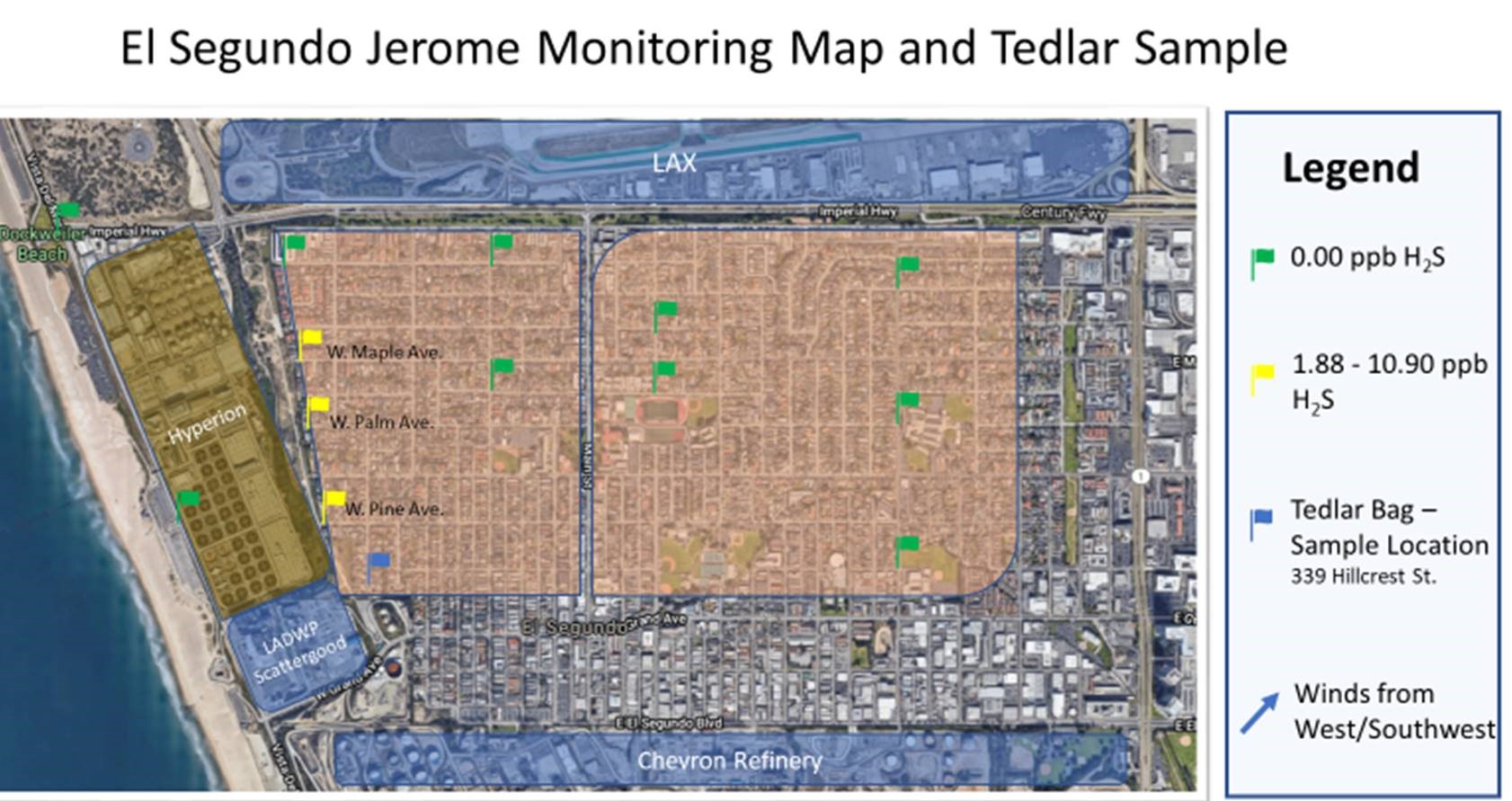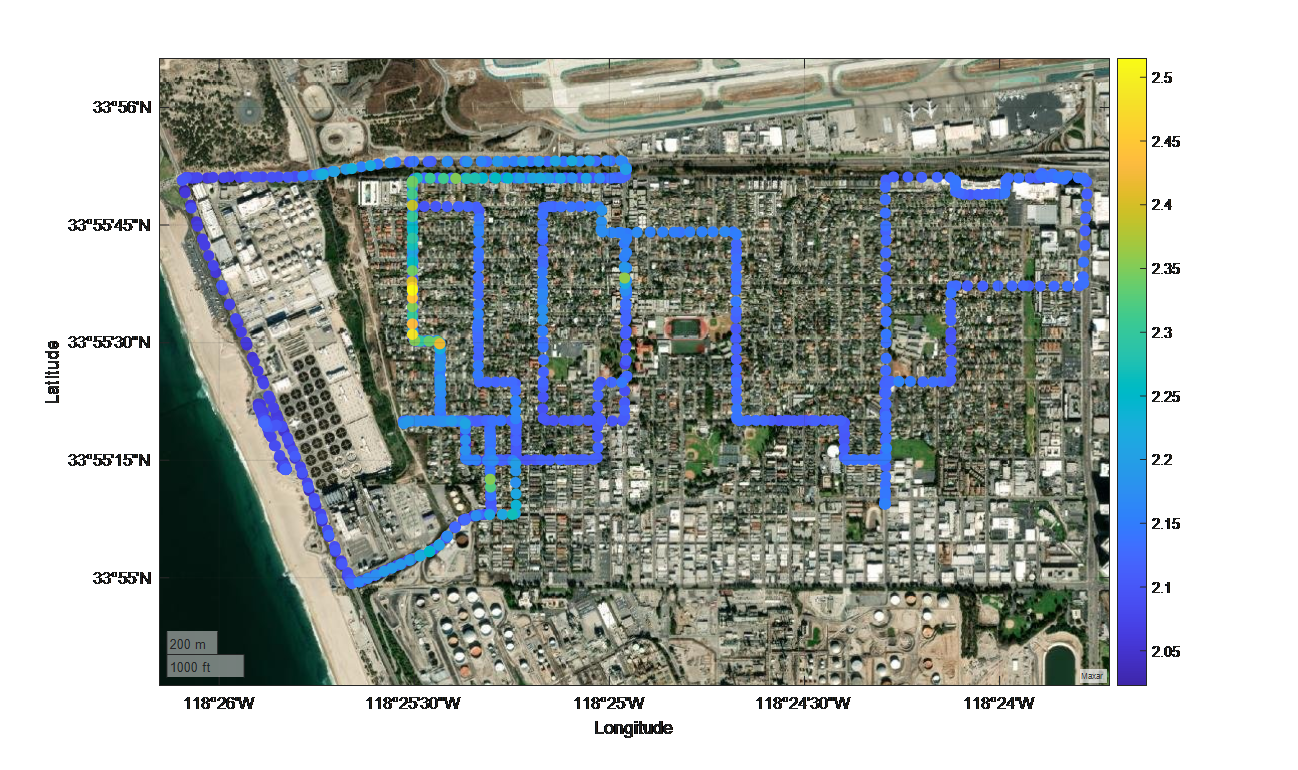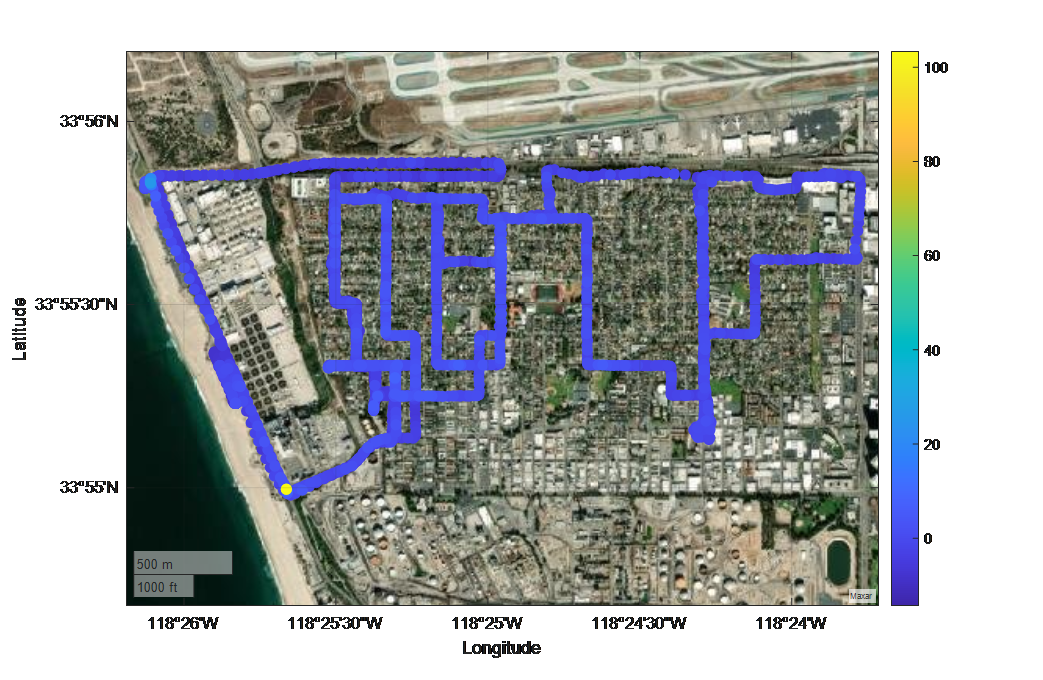Overview
The Hyperion Water Reclamation Plant (Hyperion), operated by City of Los Angeles Sanitation & Environment (LA Sanitation), is a sewage treatment plant in southwest Los Angeles, California. On July 11, 2021, a blockage in the facility’s filter system caused raw sewage to flood the plant, damaging numerous pumps and other equipment. The facility then released approximately 17 million gallons of raw sewage into the ocean as part of an emergency discharge. South Coast AQMD is actively engaged and responding to community concerns due to the ongoing impacts of this situation in El Segundo and other surrounding communities.
Odors
The release of sewage is believed to be the primary source of odors. The foul odors can cause temporary symptoms such as headaches and nausea.
Residents experiencing health symptoms are encouraged to contact their healthcare provider. Some air purifiers can filter out odor-causing gases, which may help reduce odors indoors.
Residents who detect odors can file an air quality complaint by calling 1-800-CUT-SMOG (1-800-288-7664) or online at www.aqmd.gov/complaints.
Ongoing Investigation
Inspectors were immediately dispatched following the incident on July 11 and have been on-site at the facility many times, including almost daily from the start of the incident through September 2021. Inspectors have responded to over three thousand complaints from members of the community, and we are working closely with Los Angeles County Department of Public Health (DPH) and other local officials. As a result, 47 Notices of Violation (NOVs) have been issued to Hyperion under Rule 402 (public nuisance) and one NOV has been issued under Rule 401 (visible emissions), and one NOV was issued for permit condition violations. Additionally, on February 16, 2022, a petition was filed before the South Coast AQMD Hearing Board for an Order for Abatement that would force Hyperion to comply with air quality rules and permit conditions relating to their flare equipment. South Coast AQMD is currently preparing to take further action before the Hearing Board to address recent public nuisance violations that were issued to the facility in June and July 2022.
NOVs result in fines and penalties for the owner/operator of a facility, which will be determined once compliance is restored and our investigation is completed.
South Coast AQMD is also evaluating data from multiple air monitors located within one mile of the Hyperion facility. The monitors measure for hydrogen sulfide and volatile organic compounds (VOCs). These monitors are part of the Rule 1180 refinery fenceline and community monitoring program and are located at Chevron Refinery and St. Anthony Church.
The recent data from these monitors indicated that while levels of some gases, such as hydrogen sulfide (H2S) are higher than typical levels, they remain below the California state standard of 30 parts per billion (ppb), averaged over one hour. While very short-term measurements (such as a 5-minute average) may be above 30 ppb, the standard would only be exceeded if the average over a full hour exceeds 30 ppb. The California OEHHA has also established a chronic (long-term) Reference Exposure Level of 7ppb, but this is intended to be used for average pollution levels over a long time period, such as a one-year average or longer.
Survey Measurements, Air Sample and Mobile Monitoring
South Coast AQMD conducted survey air measurements in the community nearby the facility to identify areas where H2S levels may be higher. South Coast AQMD also deployed its mobile monitor to collect measurements for gaseous air toxics and methane in the community nearby the facility.
August 2, 2021: A grab sample was collected in the residential area near the southwest side of the facility (blue flag, figure 1). Laboratory analysis of this sample showed an instantaneous H2S concentration of 70 ppb. H2S is an odorous gas, and some people can smell it at concentrations as low as a few ppb. The purpose of an instantaneous reading is to give an indication about what levels may be present in the community, although the levels will vary minute to minute and across different locations. However, an instantaneous sample cannot be used to conclude whether the California 1-hour state standard for H2S (30 ppb) is exceeded, since this standard is based on levels persisting for a 1-hour time period.
The lab report can be found here.
August 3, 2021: Inspectors conducted survey measurements for H2S at different locations in the adjacent communities using a hand-held device. H2S readings were mostly non-detect. Levels of H2S were detected in areas closest to the fenceline of the facility and ranged from 1.9 ppb to 10.9 ppb. The maximum instantaneous H2S reading was detected on West Maple Ave. (10.9 ppb), West Palm Ave. (10.7 ppb), and West Pine Ave. (7.1 ppb). These data show that at the time of measurement, the H2S gases were present in the community areas within 500 feet from the Hyperion facility, which provided some guidance for field investigation and community monitoring efforts.
August 4, 2021: Results from methane measurements showed slightly elevated levels near the facility compared to other areas surveyed but were still within typical background levels. Results for gaseous air toxics (benzene, toluene, ethylbenzene, xylenes) showed no elevated levels detected in the community. One, brief elevated measurement was detected, but was no longer present following repeated measurements at this location (potentially a transient source, i.e. a passing vehicle) (Figure 3). No other elevated gaseous air toxics were observed in the community.
Maps and summary report can be found here.
August 5, 2021: Instantaneous H2S readings at different locations ranged from 0.0 ppb to 8.2 ppb. Slightly elevated methane levels (up to 5ppm) were observed near the Hyperion facility. Similar methane concentrations have been observed in other urban areas.
Results for gaseous air toxics (benzene, toluene, ethylbenzene, xylenes) from the mobile monitor showed no elevated levels detected in most of the community. A slightly elevated level of benzene was detected north-west area of El Segundo; South Coast AQMD is currently investigating potential sources.
Maps and summary report can be found here.
Three grab samples were also collected showing gaseous air toxics were within typical background levels. See lab report.
There were some elevated levels of the volatile organic compound isopropanol in one of the samples collected in the community just east of the facility. Isoproanol is a common solvent typically associated with cleaning products. While the sample showed levels of isopropanol to be above background levels, it was significantly below state health-based standards.
Map and summary can be found here.

Figure 1
South Coast AQMD also deployed its mobile monitor to collect measurements for gaseous air toxics and methane in the community nearby the facility. Results from methane measurements showed slightly elevated levels near the facility compared to other areas surveyed but were still within typical background levels (Figure 2). Results for gaseous air toxics (benzene, toluene, ethylbenzene, xylenes) showed no elevated levels detected in the community. One, brief elevated measurement was detected, but was no longer present following repeated measurements at this location (potentially a transient source, i.e. a passing vehicle) (Figure 3). No other elevated gaseous air toxics were observed in the community.

Figure 2 Map showing methane measurements near the Hyperion facility

Figure 3 Map showing gaseous air toxic measurements near the Hyperion facility
The Mobile Monitoring Summary can be found here.
Next Steps
South Coast AQMD continues to respond to complaints and work with agency partners on the investigation. LA Sanitation is in the process of installing a fenceline monitoring system around Hyperion and advised that it is planning to take additional steps to reduce odors from the facility.
More Information: